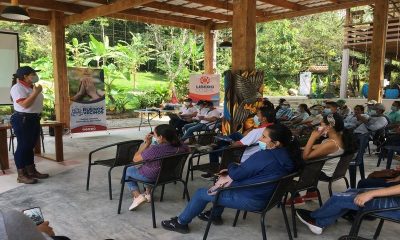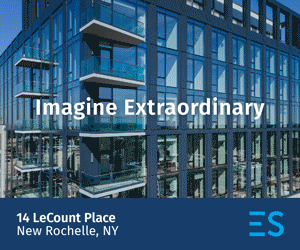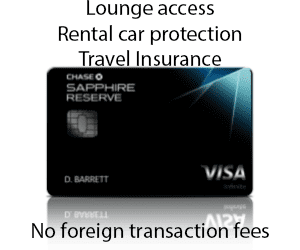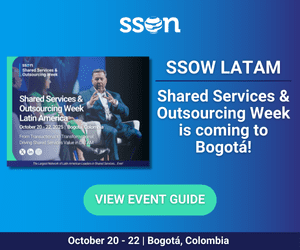Interview: Saúl Kattan Explains Internexa’s Expansion Strategy Into Cybersecurity and Connectivity in Colombia
In September 2025, during ANDICOM 2025—Colombia and the Andean region’s annual information and communications technologies (ICT) congress organized by CINTEL, Network operator InterNexa, a technology services provider with 25 years of operational experience, announced an expansion of its service portfolio. The company, which operates in Colombia and Peru with commercial presence in the United States, is evolving from primarily a connectivity operator to a provider of integrated technology services across three main verticals: technology services and cybersecurity, infrastructure and cloud services, and connectivity. This strategic shift is aimed at supporting government entities, mining and energy companies, and other telecommunications sector participants in their digital transformation initiatives.
As part of this expansion, InterNexa introduced its new Security Operation Center (SOC) service. This solution is designed to provide organizations with comprehensive cybersecurity management and strengthening capabilities. The SOC is characterized as an advanced monitoring and response center that integrates technology, automation (including artificial intelligence and machine learning), and intelligent real-time analysis to anticipate and effectively respond to cyber threats. The launch of the SOC is set against a backdrop of increasing cyberattacks in Colombia; the Ministry of Information and Communications Technologies (MinTIC) reported approximately 36 billion attempted cyberattacks in Colombia during 2024, positioning the country as the second most targeted in Latin America, accounting for 17% of total attempts.
InterNexa’s capabilities in cybersecurity, cloud, data center, and managed services are intended to support public entities in technology and innovation procurement processes. The company is part of Grupo ISA (BVC: ISA), which in turn is part of Grupo Ecopetrol (NYSE: EC, BVC: ECOPETROL), Colombia’s largest company. This affiliation provides a foundation for high-availability, scalable, and secure solutions, leveraging ISA’s 57 years of experience in critical infrastructure.
During ANDICOM, Loren Moss, executive editor of Finance Colombia, was able to spend a few minutes with InterNexa CEO Saúl Kattan to discuss the company’s strategy and objectives under his leadership; first during a press conference, followed by an exclusive one-on-one interview.
During the press conference with Saúl Kattan before the one-on-one interview, Kattan had these comments:
“This is the most important event Colombia has had. I don’t think there is any other event with as many attendees as ANDICOM. More than 6,000 attendees registered for the event. On the one hand, we are celebrating 40 years of ANDICOM, and on the other, we are celebrating 25 years of InterNexa, which is very important to us. So, we wanted to bring you all together and tell you about a few things. From InterNexa’s perspective, and from the National Government’s perspective.
I believe that from the National Government’s side, we continue to work on connectivity in the regions. We continue to make progress on various issues related to digital transformation. I believe that the most important issue is connectivity. It is how we can truly close the digital divide that exists in the country. Today, we are talking about connectivity of around 60-65%. It depends on how we measure it or who measures it. However, those people who are not connected are clearly the least well-off, the most in need. And this obviously leads to inequality. So, we need to work hard on the issue of connectivity. It should not be a plan of one government or another. This has to be a union of all the forces of the next government to push connectivity forward. It makes no sense to keep talking about new technologies, about being leaders in artificial intelligence, when all this does is increase the digital divide. Increase the difficulties between the most privileged and the least privileged.
So, to do this, we need to close that digital divide, connect Colombia, connect the country, and then we can think about new technologies. New humanized technologies, new technologies that we think about how they help people. They help people truly thrive, truly get ahead. Not just having technologies for the sake of having them. Like, now we have artificial intelligence. So what? How does it help us? How does it help ordinary people? How does it help all of us to have a better quality of life? So that’s from the government’s side. If you want, we’ll open it up for questions, and then we’ll move on to InterNexa.”
Finance Colombia: I’m here with Saúl Kattan: Kattan, the CEO of InterNexa. We are here at ANDICOM 2025. First, Saúl Kattan: thanks for making time. I know that you’re very busy closing deals and not only managing InterNexa —congratulations on that role— but you also have another position, helping the MinTIC, or the Ministry of Telecommunications, Information and Communications. If you would, tell us a little bit about your responsibilities there.
Saúl Kattan: Well, thank you for the invitation. Not only MinTIC, I’m trying to advise the government of Colombia in digital transformation. All the strategy around cybersecurity, all the strategy around data, data centers, cloud, and artificial intelligence. So that’s what I’m working on as a strategy proposition to the government in these aspects. And of course, InterNexa, which is an important player in the market.
Finance Colombia: Things are moving very quickly. We look at what artificial intelligence is doing. But you also mentioned cybersecurity. And I’ve seen several studies that show that Colombia, as a country, including the private sector, but then of course with the government as well, there are gaps when it comes to knowledge, best practices, as well as having the technical infrastructure. What are the steps that the government, but then even the private sector, like here at ANDICOM, what are the steps that we need to take here in Colombia to catch up, to make sure that the country has good defenses against cyber threats?
Saúl Kattan: I think that the most important part is the governance in cybersecurity. We have proposed to create an agency, a cybersecurity agency, that has to go to congress. Unfortunately, congress has denied this law project. The government will insist. But without an agency, a cybersecurity agency that can bring together all the entities, all the public entities, all the government into one agency, it will be very difficult. Other than that, of course, there’s technology. Different types of technology can work.
Another issue is people. We have to train people. There’s a big gap in the number of people with the knowledge of cybersecurity. We calculate that we need around 150,000 more people trained for cybersecurity. So, at the end, if we bring the government, if we bring the technology, and we bring the people, the training of people, I think we can have something more robust for the country.
Finance Colombia: InterNexa is a wholesaler, and you provide services to large-capacity consumers such as cell phone operators and such. What would this security role you’re talking about look like? How can you offer that to the end user? Would it be through the wholesale customers?
Saúl Kattan: Yes, we would not reach the end user. InterNexa’s focus is on wholesale connectivity. We serve operators and CSPs. We have a very important network, a very important neutral network, but we also provide technology services to the minor energy sector and the government sector. So the focus is on these entities, which in turn reach the end user in one way or another. So indirectly, we are reaching the end user, but the idea is to be able to continue focusing on the companies and sectors we are serving. We do not have the capacity at this time to reach the end user. Hopefully, in the future, but at this time, we do not have the capacity.
Finance Colombia: As someone with extensive experience in entities and companies with State or government participation, such as ETB, Ecopetrol, or InterNexa, what is the key to managing the interests of shareholders, whether they be the state, consumers, or private shareholders? If I remember correctly, ETB, for example, is about 80% government-owned and 20% Ecopetrol-owned, more or less. InterNexa has several shareholders. As an executive, how do you strike that balance? If you were advising a young executive, how would you advise them to survive? What would it be like?
Saúl Kattan: I believe that the great challenge for public companies is consistency. There really is no consistency in corporate governance. It often depends on politics. When the government changes, the people change. Sometimes during a government’s term, people change simply for political reasons. And as long as there is no long-term consistency, no long-term strategy, it’s a bit like what I was saying about the country’s connectivity. And the same applies to companies. You see private companies with presidents who last six, seven, eight, 10, or even 20 years. And they have a strategy. And the strategy is being fulfilled. Some are better than others, but it is being fulfilled.
In public companies, unfortunately, governments change and people change. And when people change, they come back and start from scratch because they think, “Well, this comes from the previous government, so let’s do the opposite.” And we see this at ETB. The company was doing wonderfully well, and then it was a debacle. Simply because of a political decision. Now they are trying to rescue it, but we have been in a debacle at ETB for 10 years. The stock dropped 95%. And what happened? Nothing happened. Because it was a political issue. And the financial damage that was done was enormous. If this had been maintained, not even the administration, but if the strategy had been maintained, today ETB would be worth four or five times more than it was 10 years ago. So I recommend that. That you have to maintain a certain long-term strategy for things to work.
Finance Colombia: I remember 10 years ago, when I lived in Bogotá, at the time you were leading ETB, and ETB rolled out something very impressive, and that was fiber to the household. And that was very new at the time, and Colombia was a leader in that, and that was under your leadership there. I now live in Antioquia. I have fiber optic to the house, and I tease some of my friends back in the US that I have double and triple the speeds in a rural area of Antioquia that they can get at any cost, unless they went to an enterprise plan or something like that, back in the States, in some areas, and that’s really amazing.
What have been the keys to success in rolling out fiber? Not just with InterNexa, which obviously is a wholesale provider to the carriers and large enterprises, but you also have experience at the retail level. And how has Colombia led with the adoption of fiber optic as a standard, as opposed to an exotic alternative?
Saúl Kattan: Well, no, I think fiber optic is the best technology that we can have for connectivity. I believe that now, I believed this 10 or 12 years ago when I got to ETB, that was a big project to show that ETB was not a phone company. It was much more than that. We took advantage of all the pipelines, all the networks that ETB had, and we deployed fiber. We were the first ones in Colombia, one of the first ones in the region. We were leaders in bringing fiber to Bogotá. At that time, 100 megabytes per second was amazing. Today it’s very good, but at that time it was outstanding.
Finance Colombia: Exactly.
Saúl Kattan: And of course, that took other companies to see what was happening in ETB, to see what the customers believed that fiber could do, and they started deploying fiber around the country.
Finance Colombia: To catch up.
Saúl Katta: To catch up, and to other countries as well. But today, even today, 10 years later, we can see that Bogotá is a more advanced place in Colombia with fiber.
Finance Colombia: Now, at InterNexa, you have a role as an enterprise that has the State and other entities with shared ownership in InterNexa, and so aside from being a company, you have a public purpose and a public mandate. We just got finished talking about how great things are in Bogotá, how great things are in Medellín, but there are parts of Colombia… We’re here on the Caribbean coast, we’re in Cartagena, but we can go a couple more hours and we’re in La Guajira, or the other way towards Panama, and we’re back in the Gulf of Urabá, or Chocó, or the south like the Amazon and Vaupés and those areas. So in Bogotá, Medellín, everything is world-class, but there are parts of Colombia that maybe have a lot of catching up to do. What is the role that InterNexa can play as a backbone provider, the social side of things, to help advance and equalize that connectivity?
Saúl Kattan: I do believe that Colombia has a big gap in connectivity. Today, 30 or 40%, depending on how you measure things, of people in Colombia do not have connectivity or have very bad connectivity. And I do believe that it doesn’t matter if you do a deployment to low-income areas to make things profitable. You can do a business providing fiber, providing connectivity to all these places that you mentioned that do not have connectivity. And I think that it’s possible. I think that in some places, maybe we need a little bit of help, financial help from the government. But other than that, I think there are a lot of places where if we get the fiber there, it will bring connectivity. There are a lot of ISPs, small ISPs, that can bring connectivity to the households and decrease the connectivity gap. So I think it is possible. I think it’s possible.
I think that InterNexa is a profitable business. We do business to make money because of our return for our investors, which is ISA. But of course, we can help the people. We can help all these regions with no connectivity, being a profitable company. I don’t think they’re going the wrong way.
Finance Colombia: Great. So that means that with ISA, InterNexa is generating profits; it doesn’t need government subsidies. Right now, when we’re in a fiscal crunch here in Colombia, it’s actually helping to solve the problem rather than saying, “Hey, we need subsidies” or things like that.
Saúl Kattan: Yes, of course. The problem of places like Colombia and many other countries is that the big carriers want to have the big markets, of course. That’s where the meat is. That’s where the big profits are. So you go to Bogotá, you go to Medellin, you go to Cali, Barranquilla, Cartagena, the big cities. But when you have to go to other places, you have to make a much bigger effort to get there. It becomes much more difficult. There are profits, but probably a lower amount of profits.
Finance Colombia: Right.
Saúl Kattan: But at the end, if you can make both, if you can bring all the fiber, the big networks to the big cities, but also to the small cities, I think that the complement is great for the country. And it will bring more profits for everyone. Because if there’s connectivity, there will be more opportunities for the people. There will be better health for the people. There will be a lot of places where people can go for tourism. And it will bring more consumption of the internet.
Finance Colombia: Absolutely.
Saúl Kattan: And it will increase the use of the fiber. So, at the end, it is a win-win situation for everyone.
Finance Colombia: I think just like roads, the fiber optics and connectivity backbone, whatever technology, if it’s a microwave or a satellite or fiber, is the great driver these days, even more so than roads, as was the case, let’s say, in the 20th century. Because, you know, it breaks my heart. I was in parts of La Guajira, and I saw little communities. They didn’t even have cellular access, let alone internet access. They have no access at all. And so even if you’re a school, even if you’re a student and you do your part, it doesn’t matter because you’re going to be left behind without that. And so it’s so critical to get these services to these areas where you can develop that human talent.
Saúl Kattan: It is critical and it is very important for the development of the country. You don’t have to go to La Guajira to see this. When you go 20 minutes away from Bogotá, you can see it. There is no connectivity or very bad connectivity. You cannot hold a conference call going from Bogotá to La Calera. Where La Calera is, for the people that don’t know, is basically a part of Bogotá.
Finance Colombia: Yeah, it’s a suburb in the northeast.
Saúl Kattan: A big part of Bogotá, yeah. So there’s a lot of work to do. There are a lot of opportunities. There are a lot of investments to be made. And it’s about time. It’s about money. And it’s about the consistency of the next government and the next couple of governments that we can continue working and doing things. Unfortunately, politics work in a different direction. And when another government comes, they want to change everything. And then you don’t get the benefits of a long-term strategy.
Finance Colombia: Exactly. And I guess I would say don’t feel too bad because as we can see, that’s not a problem unique to Colombia. Back in my own home country, we have the same problems, in other parts of the world as well. But you’ve been very successful navigating this. I think I first met you back at ETB, and I’ve followed your career since then. You’ve had success doing your part at Ecopetrol, of course. And that’s almost impossible. It’s like one of those reality shows. You know? So congratulations. You’ve been able to have a positive impact wherever you go. And I appreciate your time. I want to let you get back to the deal-making and the moving and the shaking as we do here. And it’s great to see you again.
Saúl Kattan: Thank you very much.
Finance Colombia: Absolutely.
Saúl Kattan: Thank you. Thank you for your time.



























